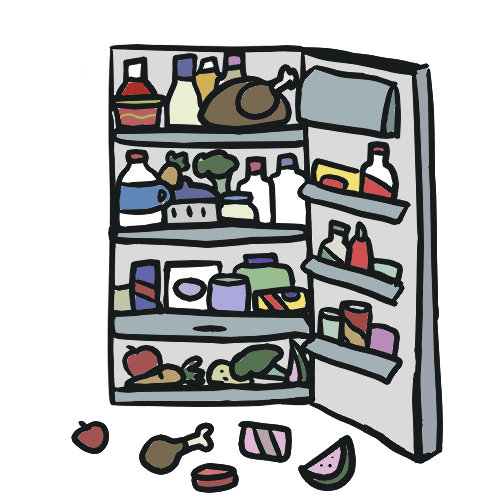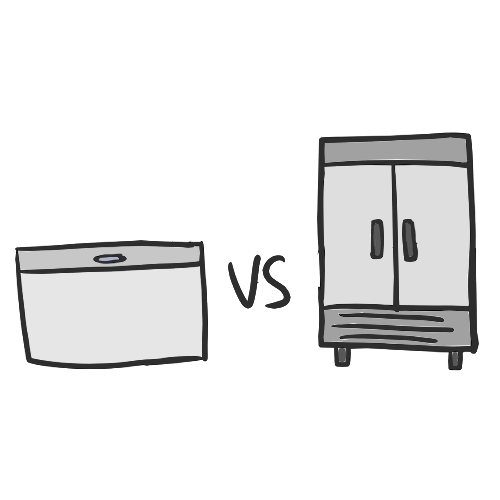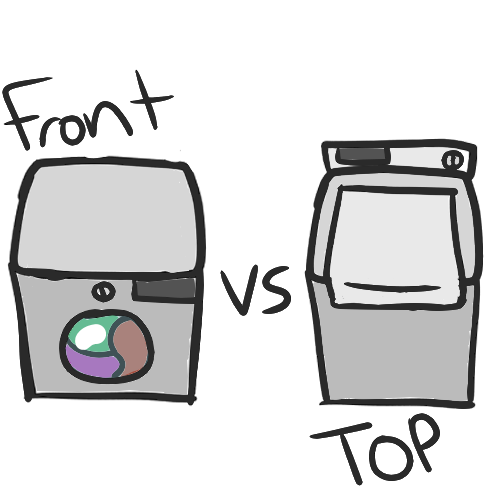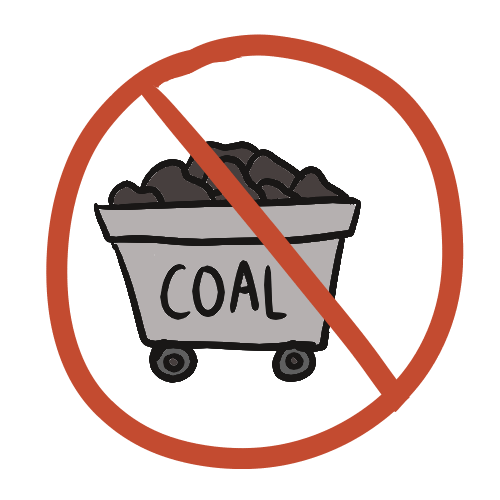The London Green Directory!
Air Quality | Waste | Food | Water | Energy | Transportation | Ecowise Consuming | Empowerment| Biodiversity
Energy

In Ontario as of 2018, electrical energy comes from 6 sources: 59% nuclear, 21% hydro, 16% natural gas, 3% wind, 0.5% solar and 0.1% biomass (according to HydroOne). By reducing our energy consumption, we reduce problems plaguing each of these areas. Less nuclear power use, reduces nuclear production residue, less hydro-electric power spares natural areas from flooding. In 2014, Ontario stopped relying on coal as an energy source which allowed Ontario to achieve their reduction target of 6% of emissions below 1990 levels. In addition, since the elimination of coal, our energy sector has been cleaner. In 2016, about 90% of the electricity system was greenhouse gas emissions free although nuclear continues to engage public debate as the processes for mining and refining uranium ore and making reactor fuel all require large amounts of energy.
The Federal and Provincial governments now use 2005 as their baseline year for emission reductions.
In 2015, Ontario produced 166.2 megatonnes of carbon dioxide equivalent (CO2e). Emissions have declined since 1990. Most of this emitting is from transportation, buildings, and industries. Ontario also has the third lowest emissions in Canada. Ontario consumed 32% less electricity than the national average. In London specifically, the total energy distributed increased 0.8% in 2017 to 178.7 gigawatt hours.

Ontario was the first jurisdiction in the world to commit to phasing out the use of coal power. Nanticoke, the largest coal-fired power plant in North America and Lambton’s plant, near Sarnia was Ontario’s second highest air polluter. Both influenced London’s air. In 2005, Ontario’s coal-fired plants produced as much pollution as 5.6 million cars.

Alternatives such as solar power, geothermal, biomass, wind, water (tides) and waste provide new options. Energy from landfill waste, ethanol from grains and electricity from wind and photovoltaics are growing in importance in Southwestern Ontario. A few places in London which provide solar energy equipment are: Solcan, SunTap Technologies, and the Solar Store.
A major provincial open-market supplier of green energy available in London is Bullfrog Power whose generators meet or exceed the federal government’s Environmental Choice Program EcoLogo standard for renewable electricity.
Locally, London’s Community Energy Action Plan has evolved to become London’s Climate Emergency Action Plan. The approval of Council of an emergency plan in April 2019 was an urgent response to our changing climate. The goals in the emergency plan are to reduce London’s greenhouse gas emissions by at least 30% by 2030 and reach net-zero by 2050. Public consultation over 2020 into 2021 has led to collaborative input towards a strategy of a long-term (30 year) roadmap to net-zero emissions by 2050.
London’s Energy Plan has been an overview on energy consumption in London and associated greenhouse gas during the period from 1990 to 2019. The biggest improvements seen since 1990 have been in residential energy use per person, which was 17% lower than 1990. This may be attributed to improvements in the energy efficiency of consumer appliances, space heating and cooling systems, home retrofits, and new home construction. The volume of fuel sold in London had been increasing year-over-year between 2011 and 2016, but this trend stopped in 2017 and continued to stop through to 2019. Transportation fuel use per person decreased by 3% between 2018 and 2019, and is now 11% lower than 1990.
For more details visit https://pub-london.escribemeetings.com/filestream.ashx?DocumentId=60673.
The Federal and Provincial governments now use 2005 as their baseline year for emission reductions.
Home Energy Conservation
The Pan-Canadian Framework on Clean Growth and Climate Change (PCF) (December 2016) policy, is our federal climate strategy foundation to transition itself to a low-carbon future and build on the momentum of the Paris Agreement up to 2050. The PCF is critical to Canada’s climate mitigation efforts as it has set into motion carbon pricing, accelerated coal phase-out, clean fuel, vehicle, transportation and building standards, methane regulations, technology, nature-based solutions, and was informed by what Canadians asked for.
Canadian regulation of the electricity sector occurs primarily at the provincial level. This includes most policies related to pricing as well as the types of power generation used.
Incentives
As part of the Economic Action Plan, the Government of Canada ran the ecoENERGY Retrofit – Homes program until March 31, 2012, to help homeowners make their homes more energy-efficient and reduce the burden of high energy costs. Successfully reaching its goal of 250,000 registered homeowners.
Buildings, including our homes, account for 18% of Canada’s greenhouse gas emissions. Announced in the Supporting Canadians and Fighting COVID-19: Fall Economic Statement 2020, the Greener Homes initiative is now available to homeowners retroactive to December 1, 2020. This program is providing up to 700,000 grants of up to $5,000 to help homeowners make energy efficiency retrofits to their homes, support EnerGuide home evaluations and provide support for recruiting and training EnerGuide energy advisors. Visit https://www.nrcan.gc.ca/science-and-data/funding-partnerships/funding-opportunities/funding-grants-incentives/our-action-starts-home-home-energy-retrofit-initiative/23230.
Insulating and Weatherproofing
| Area | Problem | Location of Draft | SOLUTION |
| House | Air leaks through cracks in windows, door frames and improper caulking. This can attribute to 30-40% of the heating bill. | Cracks through the thermal envelope allow warm, moist air to leak out and cold dry air in. This makes the house uncomfortable and can cause structure damage. | Caulk all cracks from inside (around window frames, baseboards, sill plates, openings for pipe wiring etc.), weatherstrip leaky windows and doors, install storm doors or insulated doors. Insulate hot and cold water pipes. Ensure upkeep on weather stripping. |
| Attic | Heat rises and often attics aren’t properly insulated. This is the easiest and least expensive area to insulate.This attributes to heat loss of about 10-15%. | Note: openings in attic ceiling should be sealed before insulating to protect against moisture damage. | Insulate. Suggested insulation values: flat ceilings, R40, RSI 7.0; cathedral and sloped ceilings, R36, RSI 6.3 Get a reversible fan for the attic, or use vent louvers or plugs. |
| Basement | Underground basements are often cold and poorly insulated. Accounts for about 20-25% of the heating bill. | Insulation is most cost effective when done with other repairs/remodelling. | Insulate. Suggested insulation values: interior R12, RSI 2.1; exterior R10, RSI 1.8 (both to min. 60 cm below grade) |
| Windows | Existing windows can be improved with caulking and weatherstripping. | Heat loss of 15-20%. | Upgrade. Windows should be double-glazed at minimum. Consider installing low-emissivity. |
| Walls | The best time to improve wall insulation is when renovating. | Heat loss of 10-20%. | Insulate. Suggested insulation values: R20, RS1 3.5 |
Adapted from Power Saver Ideas to Help you Manage Your Electricity Bill
Ontario Hydro

Air Quality and Ventilation tips: Use natural ventilation open windows. Install a heat recovery ventilator (HRV) as directed by manufacturer. Keep indoor humidity level at 30-40%, lower in cooler weather. Keep vent grille, fan blades and air conditioner clear of obstructions.
Space Heating
- Reduce your night thermostat setting to 17°C – also use this setting if nobody is home during the day, use 20°C for when people are home
- Close off unused rooms – reduce temperature to a minimum of 10°C and close heating vents in these rooms if possible

- Close drapes or insulated shutters at night to reduce heat loss; open them during the day for sunlight
- Keep air registers and radiators clean and free from obstructions
- Clean furnace filters regularly

- Have your furnace serviced annually and check accuracy of thermostat
- Seal furnace ductwork with duct tape and insulate hot air ducts passing through unheated spaces
- Close fireplaces and woodstove dampers tightly when not used
- Keep exhaust fans in good repair – minimize their use in winter


- Install fences, hedges or trees as energy-saving windbreakers
- If re-insulating your home, determine if the furnace could be downsized
Hot Water Heating
- Turn the thermostat on your water heater down to 49°C if possible (this is if your dishwasher has a booster)
- Upgrade the hot water tank insulation to RSI 3.5 (R20) by wrapping it with glass fibre insulation
- Insulate hot water pipes – cool basements or crawl spaces
- Drain about 4.5 litres of water every 2 months from the hot water tank to remove sediment and reduce scaling
- Turn off your water heater during vacations or weekends away
- Fix leaky taps. At one drop per second, it wastes 800 litres per month
Using faucet aerators can reduce water consumption by 25-50% per tap since they add air into the water flow - Take a shower instead of a bath. The average bath is about 75 litres of hot water, while taking a 5-minute shower with an energy-efficient showerhead uses less than half of that

- Wash your clothes with cold water instead, it will protect your clothes from fading and shrinking. About 25% of hot water is used for clothes washing, switching to cold water is the equivalent amount of energy saved for 220 showers a year
- Using the light or short cycles on your dishwasher for easy-to-clean loads helps save energy; also letting the dishwasher air dry by opening it after the wash cycle is complete reduces energy by 10%. Always run full loads.
Space Cooling
- Use awnings, blinds or drapes to reduce heat gain through windows
- Ventilate your attic with outside air
- If you have an air conditioner, keep it in good repair and do not set it lower than 25°C
- Plant shade trees on the east and west sides of your house
- Plant trees or shrubs to shade your outdoor condenser, it becomes up to 10% more efficient
- Increase ventilation at night when air is cool and reduce it during the day to keep the hot air out

Lighting
- Turn off all unnecessary lights
- Convert to LED or fluorescent lights
- Use low-watt bulbs whenever possible
- Convert to fluorescent lights where practical and visually acceptable
- Keep bulbs and fixtures clean
- Install dimmer switches on incandescent bulbs
- Use task lighting (a smaller light close to the point of use)


- Minimize decorative lighting
- Make optimal use of natural light and track lighting
- Use switched, exterior lighting instead of dusk-to-dawn, motion-sensitive or timed types
- When decorating note: ceilings, walls, floors and furniture with light-coloured finishes reflect more light, whereas rooms with dark colours absorb light and require more lighting
- Use LED Christmas lights as they use 75% less electricity than traditional mini-lights and 98% less electricity than a 5 watt incandescent bulb
Compact Fluorescent Light Bulbs
In 2014, Canada adopted new minimum energy performance standards for lightbulbs to align with the US standards, found here. By the start of 2015 all 40, 60, 75, 100 Watt incandescent bulbs were banned from import and production in Canada. National Resources Canada describes a standard incandescent bulb as the traditional, rounded light bulb we have been using in our homes for years for all kinds of uses.

Newer halogen bulbs use 28% less energy and has a 3 times longer lifespan of traditional incandescent bulbs. CFL bulbs (the common spiral fluorescent) have been in production since the 1980’s and have been widely improved in their operation. EnergyStar bulbs are said to use up to 75% less energy and last about 8 years, as long as a traditional incandescent bulb.
Finally, LED (light emitting diodes) have become more popular in recent years, from Christmas lights, to household use. They have many more advantages than the other light bulbs, the energy being drawn to create visible light instead of creating heat (like incandescent bulb do). LED’s are said to use 75% less energy than other bulbs and last 25% longer than traditional bulbs.

Since fluorescents last up to 20 times longer, they are ideal for lights in hard-to-reach places. They also do not generate extra heat on summer days. According to the Ontario 2018 peak electricity hours, and assuming a 25 bulb house, you would save $4244 annually by switching from incandescent to LED lights; switching from incandescent bulbs to CFL would save you about $3765 annually.
Appliances and Energy Efficiency

When the time comes to replace appliances, think of both unit price and operation cost (use the ‘EnerGuide’ label to calculate costs). Any energy efficient appliance may cost a bit more but pays for itself in savings.
ENERGY STAR qualified appliances incorporate advanced technologies that use 10–50% less energy and water than standard models. Look for energy-efficient washers and dryers, refrigerators, dishwashers, room air conditioners and dehumidifiers with the ENERGY STAR label on the appliance, the packaging or the EnerGuide label.
The lifespan of common appliances varies depending on type and amount of use. As a rough estimate, dishwashers last about 9 years, fridges 9-13 years, washers 15 years, electric stoves and dryers 10-18 years and freezers 13 years.
Reducing Energy Use in Appliances
Follow the manufacturer’s instructions on appliance use and servicing.
Refrigerator

- Avoid overloading unit – inside air circulation is important
- Don’t keep the door open any longer than necessary
- Locate away from heating sources
- Thaw frozen foods in refrigerator to help keep fridge cool
- Ensure cooling coils on back of fridge are clean – this is where the heat is released from the fridge
- Leave space around the back and sides of unit for air circulation over the cooling coils
- Check to see door seals are tight by closing fridge door on a piece of paper and trying to remove paper – it should be snug
- Defrost fridge when 7 mm. of frost is in the freezer section
Freezers
- Chest freezers are more efficient than upright models
- Don’t buy a freezer with more space than you need

Ranges
- Use pots and pans with tight fitting lids and match pot to burner size
- Use energy-efficient double-boilers, pressure cookers, slow cookers, steamers and electric kettles when possible
- Self-cleaning ovens are better insulated than regular ovens – in regular use, they will use less energy
- Oven preheating takes 10 minutes and is only necessary when baking


- Keep oven door closed – up to 20% of the heat is lost when it is open
- Look for gas ranges with electronic ignitions – a pilot light burns gas all the time
- Smooth surface cooktops, with burners under glass, use more energy
- Keep drip pans clean – this conserves heat reflecting it back to the pot
- Turn off the oven several minutes before food is finished cooking – the remaining heat will complete the task
- Make sure the oven door seals tightly
Dishwashers
- Clean dishwasher screen regularly
- Only run when there is a full load and during “off peak” hours
- Try ‘econo’ cycles – they use less water and energy
- Always air dry your dishes instead of using the electric dry
- If buying an “energy efficient” dishwasher, make sure that it has a hot water booster. You can then reduce your hot water tank to 49C


Clothes Washers
- Front loading machines generally use less water than top load machines
- Whenever possible, use warm or cold washes and rinses instead of hot
- Wash full loads only

Clothes Dryers
- Hang clothes to dry whenever possible – clean the filter after every load – clean the dryer motor, drum and pipes annually
- Avoid over-drying – use automatic controls if you have them
- Avoid partial loads
- Vent your dryer to the outdoors – this uses less energy than when venting inside

Check your home electronics for “phantom load” – products such as gaming consoles, plugged in chargers (not in use), and TVs can still draw power even when turned off. Any electronic with a status light or sits on a standby mode has a phantom load. Plugging these into a power bar can be used to ensure that the power is turned off or simply unplug them if not being used. Canada has regulated the standby phantom load to only use 0.5 Watts of energy according to NRcan.gc.ca.

Alternative Energies
Solar:

Sunlight can be used directly to provide space heating in buildings, and/or hot water; it can also be converted into electricity. In solar thermal electrical generation the sun’s energy is collected by mirrors or lenses in a pipe. The energy heats the fluid in the pipe to generate electricity. Photovoltaic solar cells convert sunlight into energy with a thin film which generates electricity.
Wind:
Used widely for water pumping, but can also be used to generate electricity for grid supply and remote operation. According to National Geographic, every kilowatt-hour of electricity generated by wind turbines rather than fossil fuels prevents 2 to 4.5 kilograms of CO₂ from entering the atmosphere.


Wood:
A lot of household heat can escape up a fireplace or wood stove chimney; check the flue damper is snug and closed when not in use.
Planning for the Future
In December 2020, the federal release of ‘A Healthy Environment and a Healthy Economy’ plan builds on the PCF, to address pandemic impacts, scale up of climate action, greater Paris targets, binding five-year interval targets informed by experts and net zero emissions by 2050. For 2030 targets, it offers a 32-40% emissions reduction from 2005 levels, a step up from its formal target 2030 target of a 30% reduction below 2005 levels of greenhouse gas emissions.
A proposed Canadian Net-Zero Emissions Accountability Act, introduced in Parliament on November 19, 2020, to formalize net-zero emissions by 2050 with interim targets at 5 year milestones is important for accountability and has recently been approved.
The Ontario Ministry of Energy’s responsibility is to ensure that Ontario’s electricity system functions at the highest level of reliability and productivity. The decision-making of this ministry is of prime importance to municipalities in protecting the environment, developing renewables, cleaner fuels, new ideas and technologies. Also, the fostering of a conservation culture for Ontario’s electricity future to protect citizens in future global energy markets is paramount.


Going carbon neutral by purchasing ‘carbon offsets’ is one way we can take responsibility for emissions created every time we drive a vehicle, take a plane, or turn on a computer. This is based on the principle that, as climate change is a global problem, an emission reduction elsewhere i.e. wind farms, solar installations or energy efficiency projects have the same positive effect as one locally. By voluntarily allocating cost to carbon emissions, you can begin to designate responsibility to those emitting carbon dioxide and other greenhouse gases are regulated and taxed. This is an important step towards managing carbon emissions efficiently, reducing climate impact, supporting transition to sustainable energy and identifying reductions and savings. For several tips, visit https://cotap.org/reduce-carbon-footprint/.

Federal government transfer of gas tax revenues to municipalities began in 2005. This funding supports investment in environmentally sustainable municipal infrastructure to contribute to achieving shared national outcomes of cleaner air, water and reduced greenhouse gas emissions. For example, in Markham, ON, they have used 50% of their gas tax shares to help finance its district energy system, an annual investment of about $8 million; and in Hamilton, ON, they have used a portion of their federal gas taxes to fund solid waste projects such as its residential organics program, construction of its central composting facility, and upgrades to its materials recycling facility. The federal transfer of gas tax revenues allowed London to build the Regional Materials Recovery Facility (MRF) which diverts over 35,000 tonnes of waste a year. If not for the federal funding, along with other sources, London would not have been able to build a facility that serves not only London, but other municipalities as well. This helps divert even more waste from landfills.
Ontario’s previous government established a Climate Act in 2017 and had a Feed-in-Tariff program that encouraged the use of renewable energy sources and development of projects.
With a new government on board in 2018, these programs ended and an Environment Plan https://www.ontario.ca/page/made-in-ontario-environment-plan was established. Recent accomplishments include emissions performance standards to ensure large, industrial emitters are accountable for their emissions, the beginning of the transition to a new model of waste management that puts producers in charge of the lifecycle of their products and packaging, funding to support electric vehicle batteries, transit, disaster recovery and flooding, Cleaner Transportation Fuels regulations, and mapping of communities vulnerable to climate change. The public is advocating for consideration as well to improve energy efficiency in buildings, more electric vehicles and a phase out of natural gas fired electricity

There are two main sources of federal greenhouse gas emissions data collected. The first is the National Inventory Report with national, provincial and sectoral level data. Carbon dioxide (CO₂), methane (CH₄), nitrous oxide (N₂O), sulphur hexafluoride (SF₆), perfluorocarbons (PFCs) and hydrofluorocarbons (HFCs) are all reported as well as an analysis of underlying trends in emissions since 1990 to meet its United Nations Framework Convention on Climate Change and toward the Paris Agreement. Internationally agreed to guidelines are followed developed by the Intergovernmental Panel on Climate Change using 6 sectors: Energy; Industrial Processes; Solvent and Other Product Use; Agriculture; Land Use, Land-Use Change and Forestry and Waste.
It is estimated that the average household in London, living in a single-family home, spent over $450 every month on energy in 2019. Over half of this, about $240, was spent on gasoline. Electricity accounted for about $100 per month, while natural gas was under $80 per month. In moving the Climate Emergency Plan forward and community support, more climate change mitigation will benefit from a number of environmental initiatives such as: Food waste reduction, Buying durable products, Buying local products and taking local “staycations”, recycling and the circular economy and repurposing and renovating existing buildings. The City of London is working towards a new net-zero greenhouse emissions target by the year 2050. Net-zero will apply to both municipal operations and the community as a whole to mitigate and adapt to climate change. The City of London will also review its current medium-term goal to be 37% below 1990 emission levels by 2030.

| Greenhouse Gas Emissions | |
| Reduction Target | 2050 target: 80% below 1990 levels |
| Interim Target | 2020 target: 15% below 1990 levels 2030 target: 37% below 1990 levels |
